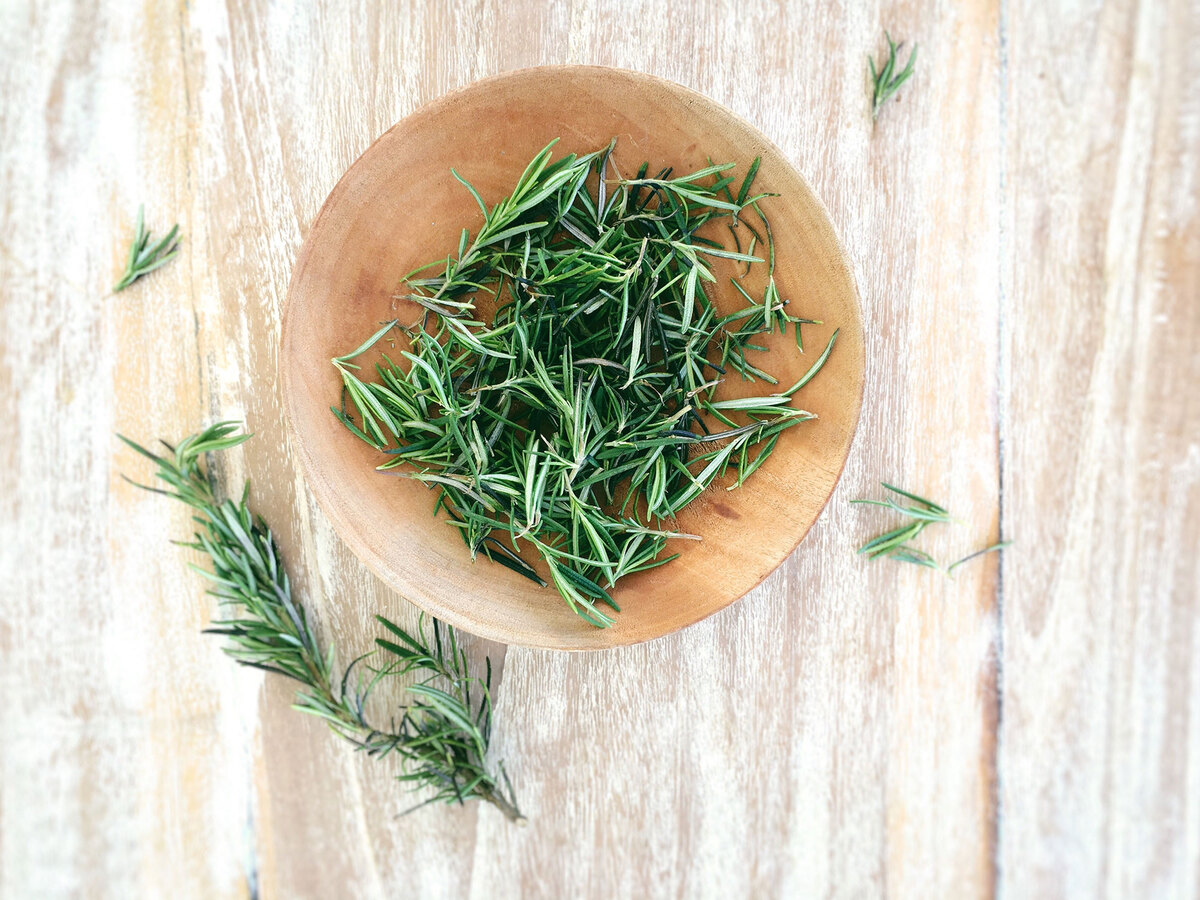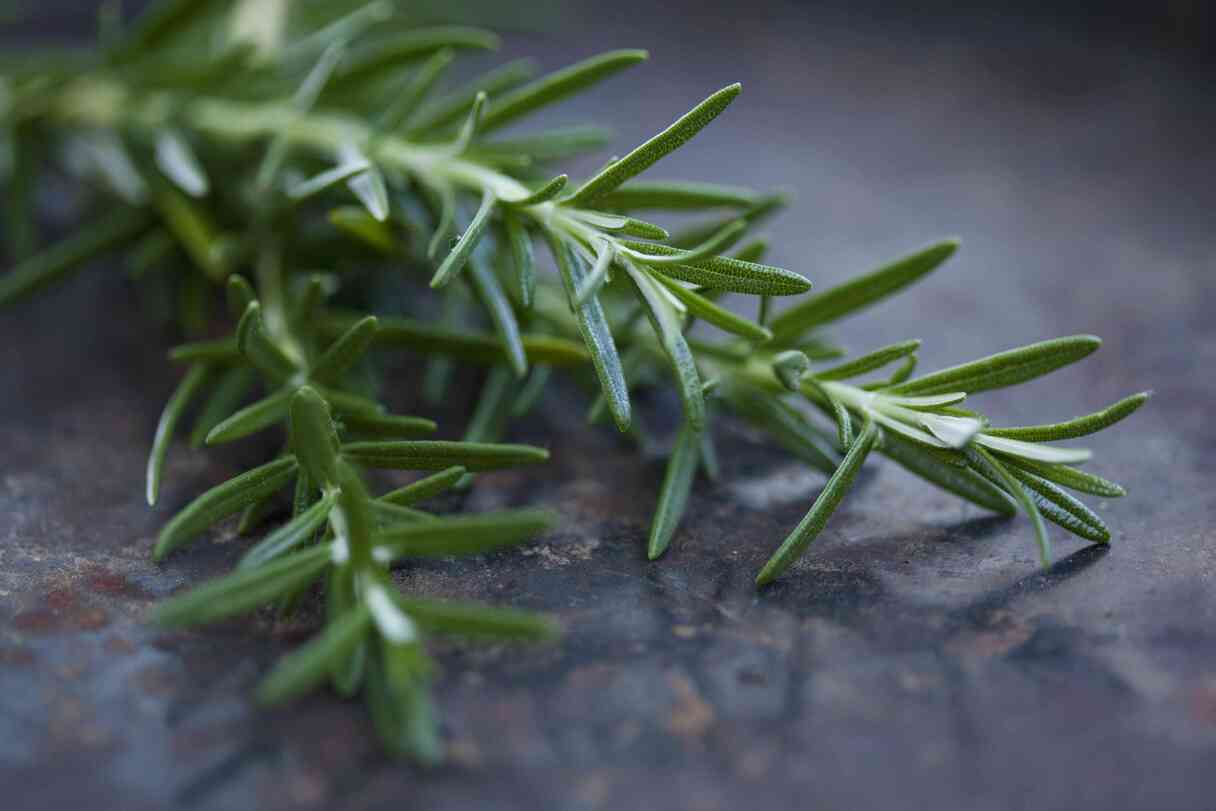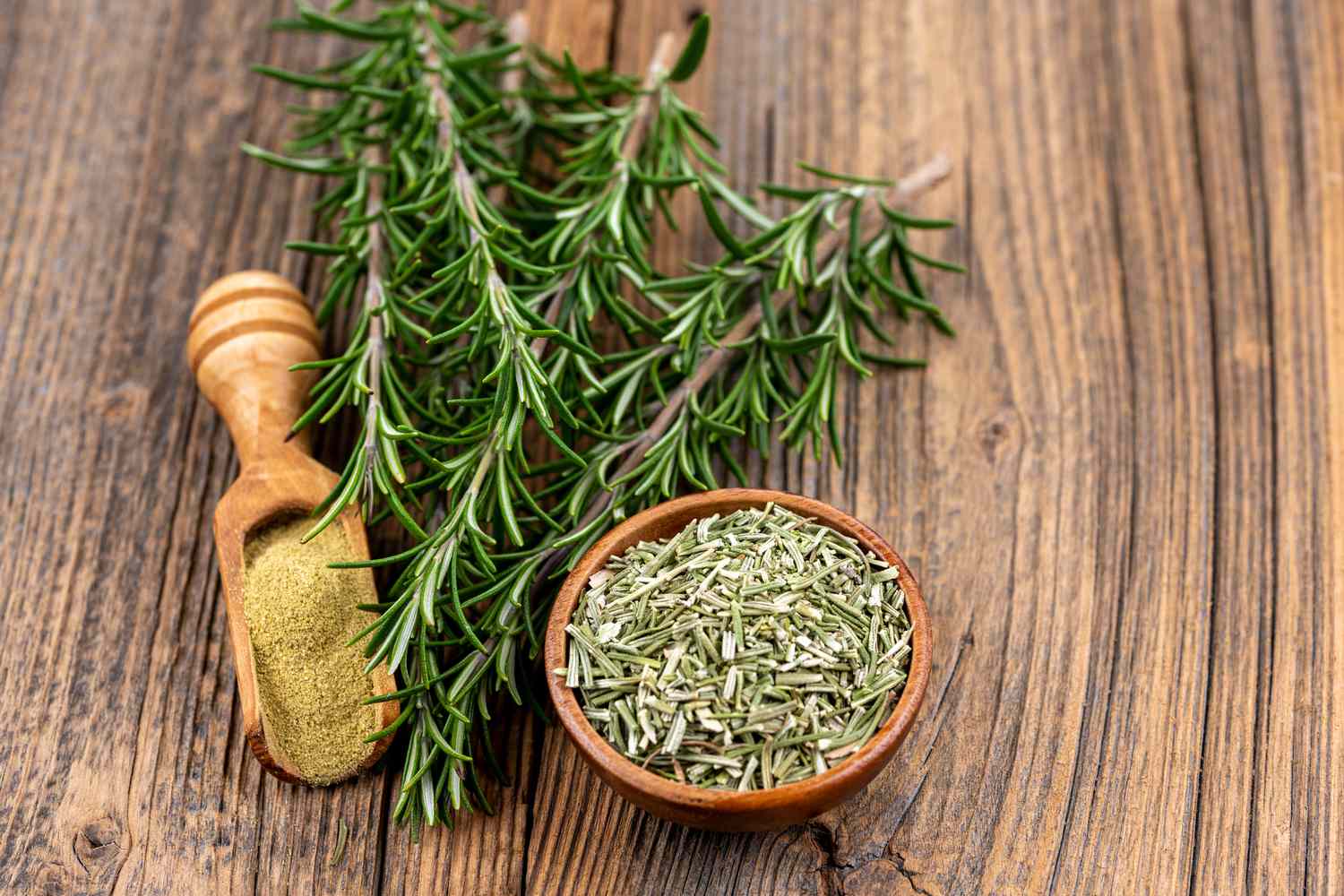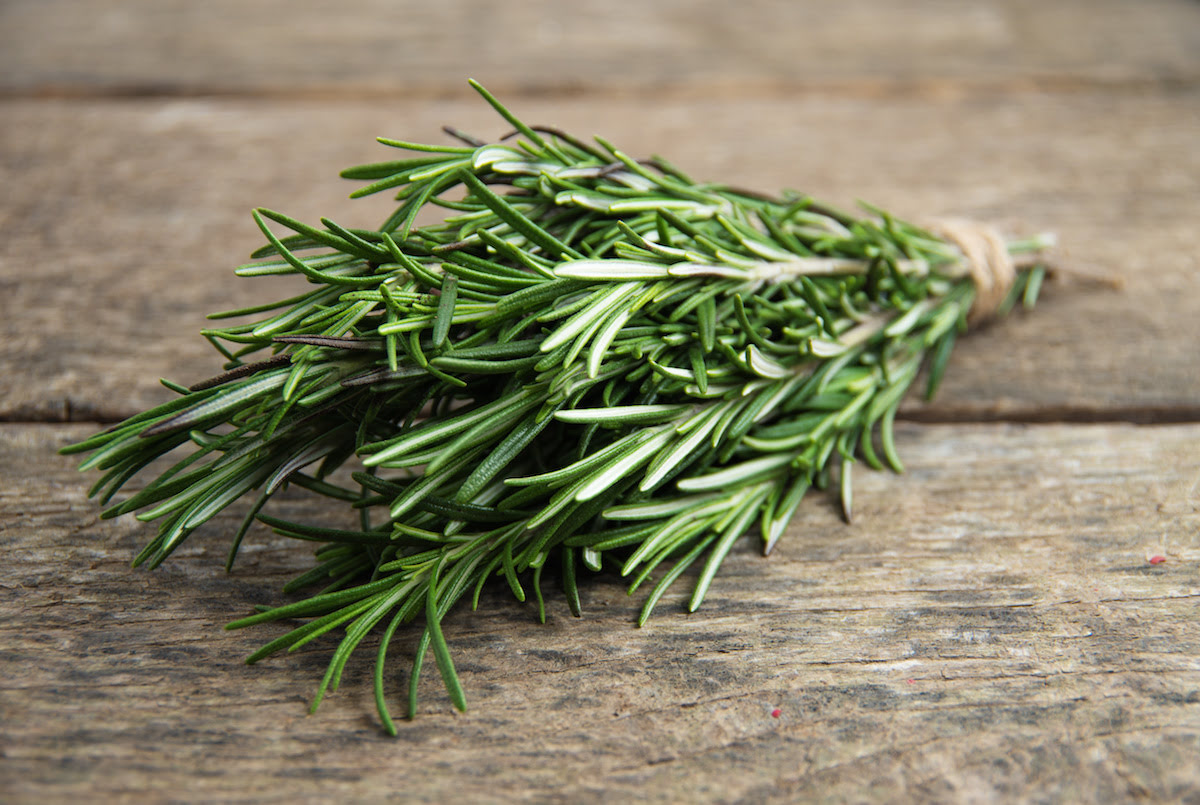Home>Gardening News and Trends>Latest News>Which Type Of Cuisine Is Rosemary Commonly Used?


Latest News
Which Type Of Cuisine Is Rosemary Commonly Used?
Published: January 30, 2024
Discover the latest news on the types of cuisine where Rosemary is commonly used. Explore the culinary applications and benefits of this versatile herb.
(Many of the links in this article redirect to a specific reviewed product. Your purchase of these products through affiliate links helps to generate commission for Chicagolandgardening.com, at no extra cost. Learn more)
Table of Contents
Introduction
Welcome to the wonderful world of cuisine! Food is not just a means of sustenance; it is also a cultural experience that brings people together. One herb that has made its mark for centuries in various culinary traditions is rosemary. Known for its distinct aroma and flavor, rosemary adds a delightful touch to dishes, elevating them to new heights. But which types of cuisine commonly incorporate this versatile herb?
Rosemary is native to the Mediterranean region, where it has been cherished for centuries. Its woody aroma and earthy flavor make it a natural fit for many dishes, adding depth and complexity to the flavors. As we explore different cuisines, you’ll discover how rosemary is utilized in each one, showcasing the herb’s versatility.
Whether you’re a food enthusiast, a chef, or simply curious about different types of cuisine, this article will take you on a journey through the culinary world, highlighting the prominent use of rosemary. From the aromas of Italian kitchens to the vibrant spices of Moroccan cuisine, you’ll soon see that rosemary transcends borders and is embraced by many cultures.
Let’s embark on this culinary adventure and explore the various cuisines where rosemary is commonly used!
Mediterranean Cuisine
When it comes to the Mediterranean region, rosemary is a staple herb that plays a prominent role in the cuisine. In countries like Italy, Greece, France, and Spain, the use of rosemary is pervasive in both traditional and modern dishes.
In Italian cuisine, rosemary is often paired with other key ingredients such as garlic, olive oil, and tomatoes. It is a common herb used in traditional Italian recipes such as focaccia, where it is sprinkled on top of the bread before baking, infusing it with its delightful aroma. Rosemary is also often used in marinades for grilled meats and roasted vegetables, adding a fragrant and savory element to the dishes.
In Greek cuisine, rosemary is utilized in numerous dishes, from savory stews to marinades for lamb and fish. It pairs exceptionally well with the rich flavors of olive oil, lemon, and oregano, creating a delightful burst of Mediterranean flavors. Rosemary is also an important component in the classic Greek marinade called “souvlaki,” which is used for grilling meat skewers and infusing them with its distinct taste.
French cuisine is renowned for its elegance and use of fresh herbs, and rosemary is no exception. It is a key ingredient in the traditional French herb blend, “herbes de Provence,” which is used to season a variety of dishes, including roasted meats, vegetables, and grilled fish. Rosemary’s earthy and aromatic qualities perfectly complement French flavors, adding depth and complexity to the dishes.
In Spain, rosemary is an essential part of the popular dishes such as paella and roasted meats. It enhances the flavors of the ingredients, particularly in hearty stews and braised dishes. Spanish cuisine heavily relies on herbs and spices to create vibrant and bold flavors, and rosemary is a crucial component in achieving that desired taste profile.
Throughout the Mediterranean region, rosemary is not only used as a culinary herb, but it also holds cultural and symbolic significance. It is believed to bring good luck and to ward off evil spirits. This adds a touch of tradition and mystique to the herb’s role in the cuisine of these countries.
The prominent use of rosemary in Mediterranean cuisine is a testament to the region’s rich culinary heritage. Whether it’s the simplicity of Italian dishes or the bold flavors of Greek cuisine, rosemary adds an unmistakable aroma and taste that elevates these dishes to new heights. It truly is a herb that captures the essence of the Mediterranean.
Italian Cuisine
When it comes to Italian cuisine, rosemary holds a special place in the hearts and kitchens of many Italians. Known for its bold flavor and distinct aroma, rosemary is an integral part of Italy’s culinary traditions.
One of the most popular uses of rosemary in Italian cuisine is in the classic dish, roast lamb. Sprigs of rosemary are often tucked into the meat before roasting, infusing it with their aromatic flavors. The pairing of lamb and rosemary has been a longstanding tradition in Italian cooking, creating a delicious and savory combination.
Another example of rosemary’s prominence in Italian cuisine is in the creation of focaccia bread. The dough is typically flavored with olive oil, salt, and rosemary, resulting in a fragrant and flavorful bread that is enjoyed as a snack or alongside Italian antipasti. The herbaceous notes of rosemary permeate the bread, creating a delightful taste experience.
Additionally, rosemary is often used in Italian marinades and sauces, adding depth and complexity to dishes such as grilled meats, chicken, and seafood. The herb’s strong flavor pairs well with other classic Italian ingredients like garlic, lemon, and olive oil, enhancing the overall taste of the dish.
One iconic Italian dish that incorporates rosemary is the Tuscan-style roasted potatoes. Here, potatoes are seasoned with rosemary, garlic, and olive oil, then roasted until crispy and golden. The rosemary infuses the potatoes with its aromatic qualities, elevating this simple side dish to a vibrant and flavorful delight.
Furthermore, rosemary plays a key role in Italian herb blends, such as the famous “Italian seasoning.” This blend combines rosemary with other herbs like oregano, basil, and thyme, creating a versatile seasoning mix that is used in a variety of Italian dishes, from pasta sauces to grilled vegetables.
Whether it’s the robust flavors of roast lamb or the comforting aroma of freshly baked focaccia, rosemary has found a cherished place in Italian cuisine. Its versatile nature allows it to be used in a range of dishes, adding a distinctive touch that enhances the overall culinary experience. So next time you indulge in a delicious Italian meal, keep an eye out for the unmistakable aroma and taste of rosemary.
French Cuisine
When it comes to French cuisine, the use of fresh herbs is essential in creating flavorful and fragrant dishes. Among these herbs, rosemary stands out as a key ingredient, adding its distinct aroma and taste to many traditional French recipes.
Rosemary is often found in the French herb blend called “herbes de Provence,” which is a combination of various herbs such as thyme, marjoram, and oregano. This blend is commonly used to season dishes such as roasted meats, grilled fish, and vegetables. Rosemary lends its earthy flavor and woody aroma, perfectly complementing the other herbs to create a harmonious taste profile.
One classic French dish that incorporates rosemary is the iconic Provencal-style roasted chicken. The chicken is seasoned with herbs de Provence, including rosemary, and then roasted to perfection. The rosemary infuses the chicken with its aromatic essence, resulting in a flavorful and comforting meal that is loved by many.
Another popular use of rosemary in French cuisine is in the preparation of lamb dishes. Rosemary pairs exceptionally well with lamb, and it is often used to season lamb chops, racks, and stews. The herb’s bold flavor cuts through the richness of the meat, creating a delectable combination that is favored in French gastronomy.
Rosemary is also frequently used in French soups and stocks, adding depth and complexity to the flavors. It is often added to hearty vegetable soups, such as the famous French onion soup, or in meat-based stocks used as a base for sauces and gravies. The herb’s aromatic qualities infuse the liquid, enhancing the overall taste of the dish.
Furthermore, rosemary is an excellent herb for infusing flavor into oils and vinegars. In French cuisine, rosemary-infused olive oil is a popular condiment that is drizzled over salads, grilled vegetables, and bread. The oil takes on the herb’s flavor, adding an extra layer of taste to various dishes.
From roasted meats to soups and condiments, rosemary is an integral part of French cuisine. Its versatile nature and distinctive qualities make it a beloved herb in the French kitchen. So, the next time you savor a delicious French meal, pay attention to the subtle aroma and taste of rosemary that adds depth and character to the dishes.
Greek Cuisine
Greek cuisine is known for its vibrant flavors, fresh ingredients, and the robust use of herbs. When it comes to the Mediterranean herb rosemary, it plays a significant role in the culinary traditions of Greece, adding a unique touch to many Greek dishes.
Rosemary is commonly used in Greek marinades, particularly for lamb and fish. The combination of rosemary, olive oil, lemon juice, and Greek seasoning creates a delightful flavor profile that enhances the natural taste of the meats. The herb’s distinct aroma adds a refreshing and earthy note to these dishes.
One standout Greek dish that incorporates rosemary is “souvlaki.” Souvlaki consists of skewered meat, typically pork or chicken, marinated in a mixture that often includes rosemary. The herb infuses the meat with its fragrant flavors, resulting in succulent and delicious grilled kebabs that are commonly enjoyed with pita bread and tzatziki sauce.
Rosemary is also commonly used in Greek stews and casseroles, particularly those cooked with lamb or goat. The herb’s robust flavor pairs well with the richness of the meat, adding depth and complexity to the dish. One famous Greek dish, “stifado,” is a hearty stew made with onions, tomatoes, red wine, and spices, including rosemary. The herb’s aromatic qualities elevate the flavors, making it a comforting and flavorful meal.
Along with meat dishes, rosemary often finds its way into Greek vegetarian recipes as well. One such example is the classic Greek salad, where rosemary can be added to the dressing or used as a garnish. The subtle hint of rosemary complements the fresh vegetables and tangy feta cheese, bringing an additional layer of flavor to this beloved Greek dish.
Furthermore, in Greek cuisine, rosemary is sometimes used in traditional bread recipes. The herb can be added to doughs such as “psomi,” a Greek crusty bread. The combination of rosemary and olive oil creates an aromatic bread with a delightful taste that perfectly complements a Greek meal.
Whether it’s in marinades, stews, vegetarian dishes, or bread recipes, rosemary adds its distinct touch to Greek cuisine. The herb’s versatile nature and strong flavor make it a favorite ingredient among Greek cooks. So, when you indulge in Greek flavors, keep an eye out for the invigorating taste and aroma of rosemary that is sure to enhance your culinary experience.
Spanish Cuisine
Spanish cuisine is a vibrant representation of the country’s rich culinary traditions, and rosemary is a popular herb that adds a delightful touch to many Spanish dishes. Known for its strong and aromatic flavor, rosemary is a key ingredient in various Spanish recipes.
One prominent use of rosemary in Spanish cuisine is in the preparation of roasted meats, such as lamb or pork. The herb is often used in marinades to infuse the meat with its distinctive flavor. The combination of rosemary, garlic, olive oil, and other Spanish spices creates a mouthwatering blend that enhances the taste and tenderness of the roasted meats.
In Spanish stews and braised dishes, rosemary plays a crucial role in adding depth and complexity to the flavors. For example, in the popular Spanish dish “fabada asturiana,” which is a hearty white bean stew, rosemary is often included in the cooking process. The herb’s aromatic qualities infuse the stew, elevating it to a whole new level of deliciousness.
Rosemary is also commonly used in Spanish cuisine to flavor soups and broths. One notable example is “Sopa de Ajo” or garlic soup, a traditional Spanish dish made with garlic, bread, Spanish paprika, and of course, rosemary. The herb’s woody taste and aroma bring a distinctive element to this comforting and flavorful soup.
Spanish cuisine also enjoys the use of rosemary in various tapas dishes. For instance, rosemary is often present in grilled or roasted vegetables, such as eggplant or zucchini. The herb adds a rustic and aromatic flavor to these dishes, making them an enticing option for tapas lovers.
Furthermore, rosemary-infused olive oil is a popular condiment in Spanish cuisine. This infused oil is drizzled over grilled meats, roasted potatoes, or even used as a dip for bread. The combination of the herb’s flavor with the richness of olive oil adds a delightful touch to many Spanish dishes.
From roasted meats to stews, soups, tapas, and infused oils, rosemary is an essential ingredient in Spanish cuisine. Its strong flavor and aromatic qualities contribute to the bold and enticing taste profiles that Spanish dishes are known for. So, the next time you savor Spanish cuisine, pay attention to the invigorating presence of rosemary, enhancing your culinary experience with its unmistakable essence.
Moroccan Cuisine
Moroccan cuisine is a tantalizing fusion of flavors derived from various cultural influences, and rosemary plays a significant role in enhancing the taste of many traditional Moroccan dishes. The bold and aromatic qualities of rosemary perfectly complement the vibrant spices and ingredients used in Moroccan cooking.
Rosemary is commonly used in Moroccan tagines, which are slow-cooked stews characterized by the aromatic blend of spices and tender meat. The herb’s woody flavor adds depth to the rich and complex taste profiles of tagines, creating a uniquely Moroccan culinary experience. It can be found in tagines featuring lamb, chicken, or even vegetarian ingredients like chickpeas and vegetables.
In Moroccan cuisine, rosemary is also a key component in the traditional spice blend called “ras el hanout.” This blend consists of various spices, including rosemary, cumin, turmeric, ginger, and cinnamon, among others. Ras el hanout is used to season a wide range of Moroccan dishes, from savory tagines to couscous and grilled meats. Rosemary adds its unique aroma and flavor to this spice mix, creating a harmonious blend that is synonymous with Moroccan cuisine.
Another popular use of rosemary in Moroccan cooking is in marinades for grilled meats. Rosemary, along with other Mediterranean herbs like thyme and oregano, is often combined with garlic, lemon, and olive oil to create a fragrant and flavorful marinade. This infusion of flavors enhances the taste of the meats, creating succulent and aromatic kebabs or grilled dishes.
Additionally, rosemary finds its way into Moroccan bread recipes, particularly the traditional flatbread known as “khobz.” Sprinkling rosemary on top of the bread dough before baking adds an earthy and herbal element, infusing the bread with its delightful flavors. The result is a fragrant and delicious bread that is commonly enjoyed with various Moroccan dishes.
Not only does rosemary enhance the flavors of Moroccan dishes, but it is also believed to have health benefits in Moroccan traditional medicine. It is used to alleviate digestive issues, relieve headaches, and improve memory, among other uses.
The use of rosemary in Moroccan cuisine showcases the country’s culinary ingenuity and its ability to combine diverse flavors and ingredients. From tagines to spice blends and bread, rosemary brings its distinctive qualities to Moroccan dishes, creating a truly memorable and flavorful experience.
Middle Eastern Cuisine
Middle Eastern cuisine is renowned for its bold flavors, exotic spices, and aromatic herbs, and rosemary is no exception. This versatile herb plays a significant role in the culinary traditions of the Middle East, adding its distinct taste and fragrance to a variety of dishes.
Rosemary is commonly used in Middle Eastern marinades, particularly for grilled meats such as kebabs and shawarma. The herb’s strong and woody flavor pairs well with the rich and smoky taste of grilled meats, enhancing their overall taste and adding a delightful aroma.
In traditional Middle Eastern cuisine, rosemary is also a key ingredient in spice blends such as “za’atar.” Za’atar is a mixture of dried herbs, sesame seeds, sumac, and of course, rosemary. This versatile blend is used as a seasoning for roasted meats, grilled vegetables, bread, and even as a dip when combined with olive oil. The combination of rosemary with other herbs and spices in za’atar creates a unique and vibrant flavor that is characteristic of Middle Eastern cuisine.
Furthermore, rosemary is often used in Middle Eastern slow-cooked stews known as “tagines.” In these dishes, the herb adds a distinctive layer of flavor to the tender meat, creating a wonderfully aromatic and flavorful experience. The earthy notes of rosemary complement the other spices and ingredients used in tagines, resulting in a harmonious and satisfying dish.
In addition to savory dishes, rosemary is also used in Middle Eastern sweets and beverages. For example, rosemary-infused honey is a popular condiment used in desserts like baklava. The combination of the herb’s unique taste with the sweetness of honey adds a delightful twist to these sweet treats.
Moreover, rosemary is often added to Middle Eastern-style breads, such as pita, flatbread, or “manakish.” The herb can be sprinkled on top of the dough, infusing the bread with its aromatic qualities. The result is a fragrant and flavorful bread that pairs well with various Middle Eastern dishes.
Whether it’s in marinades, spice blends, stews, or even desserts and breads, rosemary is a beloved herb in Middle Eastern cuisine. Its distinct flavor and fragrance contribute to the rich and diverse taste profiles that are characteristic of Middle Eastern dishes. So, when you savor the flavors of the Middle East, be sure to appreciate the aromatic presence of rosemary, enhancing your culinary journey through this vibrant and flavorful cuisine.
American Cuisine
American cuisine is a melting pot of culinary influences, from various regions within the United States to international flavors that have been adapted and incorporated into the American palate. While rosemary may not be as traditionally associated with American cuisine as it is with some other cuisines, it still finds its place in many American recipes, adding a touch of aroma and flavor.
In American cooking, rosemary is often used in savory dishes such as roasted meats and vegetables. It pairs well with hearty meats like beef and pork, enhancing their flavors and adding a hint of herbal freshness. Rosemary can be used as a seasoning or as a marinade ingredient to infuse the meat with its distinctive taste.
One iconic American dish that incorporates rosemary is roast chicken. The herb is often stuffed inside the cavity of the bird, allowing its flavors to infuse the meat as it cooks. The result is a succulent and fragrant roasted chicken that is loved by many. Rosemary can also be incorporated into chicken marinades and sauces, deepening the overall taste profile.
Additionally, rosemary is a popular herb in American herb blends, such as “poultry seasoning” or “Italian seasoning.” These blends often include rosemary along with other herbs and spices like thyme, sage, and oregano. They are commonly used to season a variety of American dishes, from roasted vegetables to stuffing, to impart that aromatic and savory touch.
Another American favorite where rosemary can be found is in focaccia bread. Although originating from Italy, focaccia has become a beloved bread in American cuisine, and rosemary is often sprinkled on top of the dough before baking. The herb’s distinctive aroma infuses the bread, contributing to its delicious and fragrant taste.
Moreover, rosemary is used in American cuisine to flavor oils, such as rosemary-infused olive oil. This infused oil adds a burst of aromatic flavor to various dishes, from salads to pasta and beyond. It enhances the overall taste experience, elevating simple ingredients to new heights.
While rosemary may not be as prevalent in every aspect of American cuisine, it still makes its presence known in various dishes and recipes. Its versatility and ability to complement a wide range of flavors make it a valuable ingredient in American cooking. So, next time you indulge in traditional American dishes or innovative culinary creations, keep an eye out for the subtle yet enticing presence of rosemary.
Australian Cuisine
Australian cuisine is diverse and influenced by a multitude of cultures, blending indigenous traditions with international flavors. When it comes to incorporating herbs in their dishes, Australians have embraced the use of rosemary, appreciating its aromatic qualities and distinctive taste.
Rosemary is commonly used in Australian cuisine to flavor roasted meats, particularly lamb. The strong flavor of rosemary pairs beautifully with the rich taste of lamb, making it a popular herb to season roasts and chops. Whether it’s a traditional Sunday roast or a casual barbecue, rosemary-infused lamb dishes are a staple in Australian households.
In addition to lamb, rosemary is often used to enhance the flavors of other meats as well, including beef, chicken, and pork. It can be used as a seasoning, marinade ingredient, or even as a skewer for kebobs, imparting its unique taste and fragrance to grilled and roasted dishes.
Rosemary is also commonly found in Australian bread recipes, such as damper, a traditional Australian soda bread. Rosemary can be added to the dough, infusing the bread with its delightful flavors. The combination of rosemary with the rustic and hearty texture of the bread is a match made in culinary heaven.
Besides savory dishes, rosemary is often used in Australian desserts too. In sweets like shortbread cookies or cakes, a touch of rosemary can lend a subtle yet intriguing herbaceous note. The herb’s aromatic qualities perfectly complement the sweetness, resulting in unique and delicious treats.
Furthermore, rosemary-infused oils and vinegars are increasingly popular in Australian cuisine. These infused concoctions add depth and flavor to salads, roasted vegetables, and various other dishes. The oil or vinegar absorbs the essence of rosemary, providing a burst of herbal freshness.
Rosemary has also found a place in Australian herb blends and sauces, used to season dishes like roasted potatoes or grilled vegetables. Its strong and distinctive flavor contributes to the overall taste experience, adding complexity and a touch of the Australian culinary identity.
In summary, rosemary has become a beloved herb in Australian cuisine, finding its place in a range of dishes from lamb roasts to breads and desserts. Its aromatic and versatile nature pairs well with many Australian ingredients, enhancing the flavors and creating memorable culinary experiences. So, whether you’re enjoying a traditional Australian meal or exploring modern Australian fusion, keep an eye out for the comforting and invigorating presence of rosemary.
Conclusion
Rosemary, with its distinct aroma and flavor, has weaved its way into the tapestry of cuisines around the world. From the Mediterranean to America, from Australia to the Middle East, rosemary’s versatility shines through in a wide array of dishes.
In Mediterranean cuisine, rosemary is a staple herb, enhancing the flavors of Italian, Greek, French, Spanish, and Moroccan dishes. Its earthy and woody notes bring a touch of authenticity to traditional recipes while also blending harmoniously with other Mediterranean herbs and spices.
As we move to other regions, we witness rosemary adapting and finding its place in different culinary landscapes. In American cuisine, rosemary complements roasted meats and bread, while in Australian cuisine, it finds a natural pairing with lamb and makes a delightful addition to unique desserts.
The Middle Eastern region embraces rosemary in their flavorful marinades, stews, and spice blends, adding a rich depth to their dishes. Each country in the Middle East incorporates rosemary in unique ways, contributing to the rich tapestry of their culinary traditions.
While rosemary may have variations in its usage and prominence across these cuisines, its essence always remains the same—an aromatic herb that elevates the taste profiles of countless dishes.
Whether you’re savoring the robust flavors of a French tagine or enjoying the smoky aromas of American barbecue, the use of rosemary instills a sense of familiarity and adds a layer of depth to the dining experience.
So, the next time you venture into the culinary world, pay attention to the subtle, yet powerful presence of rosemary. Explore its delicate balance of flavors, its ability to transform even the simplest of dishes, and its role in creating culinary masterpieces that tantalize the senses.
Let rosemary’s captivating aroma and versatile taste guide you on a journey through different cuisines, bringing a touch of warmth and richness to your culinary adventures.






